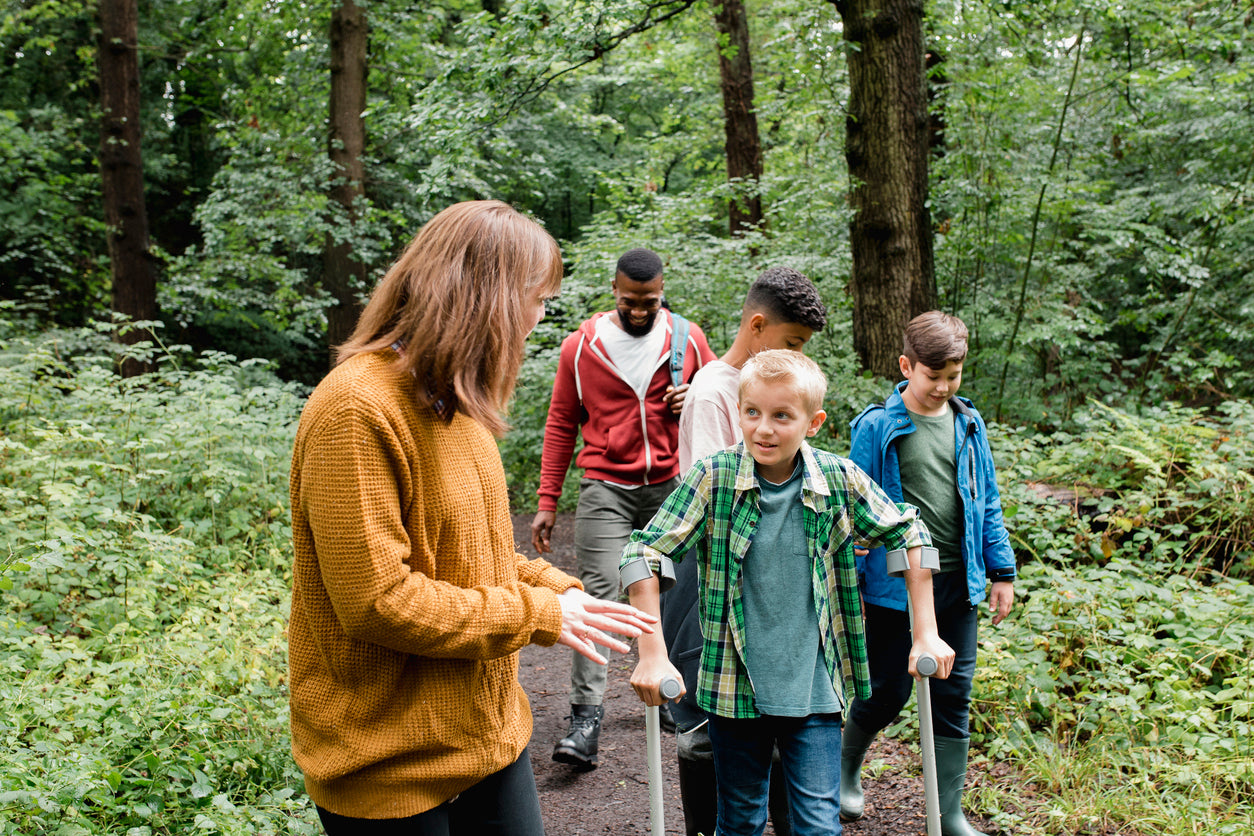Explore our collection of informative and educational blog posts to stay updated on the latest industry trends and expert advice.
15 Reasons Why Daydreamers are Better Learners

The student’s eyes drift to the classroom window and the teacher’s voice fades from consciousness.
The daydream begins. It’s a familiar scene, one we have likely both experienced as students and struggled against in our students as teachers. But daydreaming is not what it might seem. Recent research in both psychology and neuroscience makes clear that daydreaming is an essential part of mental processing, reasoning and, yes, even learning.
1. Daydreaming is the Mind’s Natural State
The most common view of the human mind assumes that our normal way of thinking consists of concentrated focus upon immediate tasks at hand. But researchers have found that this is not the case.
Daydreaming is now considered to be the normal state of our minds, with focus appearing as a break from the more common mind wandering. A recent study has found that our mind wanders forty seven percent of the time we are awake with very few activities not equally peppered with natural periods of daydreaming.
Another study has shown that the parts of the brain stimulated during daydreaming consist of the “default network” regions of the brain that are associated with most higher level mental activity. This suggests that we have evolved specifically to be a daydreaming species. It is even more telling that those who suffer injuries to the region of the brain in which daydreaming occurs suffer from a lack of spontaneous speech and thought.
The fact that daydreaming is the natural state of the human brain suggests that those who take most naturally to daydreaming will best exhibit the skills necessary for successfully navigating the human world. Far from representing a lack of discipline, daydreaming is a hallmark of a healthy and active human mind.
2. Critical Thinking and Intelligence
Aside from the “default network”, one of the main regions of brain used during daydreaming consists of the “executive network”, the region of the brain associated with complex problem solving. Before this was revealed, for example through the 2009 study at the University of British Columbia, it was commonly thought that the “executive network” was only active during focused problem solving.
As this study suggests, a healthy amount of daydreaming is connected to improved critical thinking capabilities, an invaluable characteristic in successful learners.
It has also been shown that daydreaming is dramatically more present in those considered to be of superior intelligence when compared with learners of average intelligence. One study suggests that the improved integration of the default and executive networks developed through their continual exercise through daydreaming significantly contributes to the formation of increased intelligence.
3. Motivation
It’s a truism that our “dreams”, by which we usually mean our goals and desires, provide motivation in life. What is less recognized, however, is the central role played by the process of daydreaming in envisioning and imaginatively experiencing the lives we wish to lead and people we want to become.
Our goals and desires are what they are because we have spent time freely living through our daydreams what it would be like to achieve them. For these reasons, daydreaming in learners is related to higher levels of ambition and a deeper sense of motivation.
4. Confidence
Freely imagining “what you would do if…” is far from idle. Having envisioned scenarios and played out possible events gives us an increasing sense that we can handle them.
In this way the imaginative anticipation that often occurs in daydreaming contributes as much to a robust sense of confidence as it does to a healthy motivation. Think about it this way, daydreaming is a training ground for your mind where it plays through and sometimes struggles with scenarios it has not experienced or wants to react differently to in the future.
Though successful training certainly doesn’t guarantee success during the real event, it does provide a mental preparedness and a firm sense that no matter what may occur we can deal with it. For this reason some of the most confident learners are also those with the healthiest daydreaming lives.
5. Increased Insight
Did you ever wonder what causes that moment of insight when something suddenly clicks or a solution becomes clear? The answer is a lot of hard work on the part of your brain that goes unnoticed.
Moments of insight, those sudden revelations that seem to come from nowhere, are long prepared for through the brain’s ongoing hidden organizing and processing. Daydreaming, as a mental state activating both the default and executive networks of the brain, plays an important role in that organizing and processing. What you may think is just your mind drifting is actually your mind actively forming connections between information, synthesizing what was previously only chaos, and preparing the ground for the moment when things suddenly fit into place.
Once we appreciate this we see that daydreaming is just as productive as spending an hour working on a difficult math problem. Recent work has shown that spending less time on the problem and more time letting our mind wander could contribute to getting the answer faster.
Benjamin Baird and Jonathan Schooler at the University of California at Santa Barbara have shown, as discussed in an article in The New Yorker, that spending time daydreaming after first being given a task leads to more insightful responses to the task than focus and concentration do.
6. Thin-Slicing
In his book Blink: The Power of Thinking Without Thinking Malcolm Gladwell discusses the phenomenon of “thin-slicing”, the mind’s jumping to conclusions based on surprisingly little information.
Despite what we tend to assume, Gladwell demonstrates that jumping to conclusions based on limited information is often statistically the most reliable way to arrive at the right decision. For example, Cook County Hospital changed the way it diagnoses heart attacks to focus on less information.
Here is how Gladwell describes this part of the book on his website: “They instructed their doctors to gather less information on their patients: they encouraged them to zero in on just a few critical pieces of information about patients suffering from chest pain–like blood pressure and the ECG–while ignoring everything else, like the patient’s age and weight and medical history. And what happened? Cook County is now one of the best places in the United States at diagnosing chest pain.”
The key point about thin-slicing is that its effectiveness depends upon two factors. Knowledge, especially when derived from experience, and mental integration that allows for swift access to the knowledge and experience we have gained. If we return to our image of daydreaming as the training ground of the mind, the increased integration it imposes on knowledge and experience we have collected improves our ability to successfully jump to conclusions based on little information.
It makes us more successful thin-slicers and improves our split-second decision making.
7. Improved Problem Solving
What is problem solving? From what we have already said we might suggest it is an effective use of the default and executive networks of the brain resulting in increased intelligence, critical thinking, insight and thin-slicing.
The argument that the integration of default and executive networks results in improved problem solving is offered by the author of Daydreams at Work: Wake Up Your Creative Powers, Amy Fries, in an article at Psychology Today: “…your mind-wandering capacity is like that computer program–it can get to solutions that your conscious mind just can’t see.”
In general daydreaming makes us better thinkers. Being better thinkers makes us better learners.
8. Coping
The traditional view of daydreaming understands it as a form of escapism.
We are unhappy or uninterested in where we are and so imagine we are somewhere else. It is important, this view assumes, to resist this escapist urge and instead cope with the world as it is. It turns out, however, that daydreaming is itself a central element of our mental coping mechanisms.
As already mentioned, daydreaming provides the brain with the exercise course where it can secretly play out different solutions to problems. More than this, however, those precious daydreaming moments allow us the conscious rest necessary to face difficult tasks or situations with a fresh mind. Yet, during these seeming moments of rest, the brain is still hard at work beneath the surface organizing potential responses without the generally awkward interference of conscious thought.
Researchers such as Eric Klinger have shown that children who weave an imaginative story around their play are likely to be happier at play and to play longer. It is easy to generalize this point to adults as well, the ability to tell ourselves imaginative stories about the world and our own lives through daydreaming makes even the tedious or downright painful parts of our life more enjoyable.
In learning the ability to cope with challenging, frustrating or boring tasks is a key ingredient for success.
9. Mental Elasticity
Coping is a key element of mental elasticity, the ability to shift our thought and behavior smoothly in response to changing situations and information.
Daydreaming, as the practice ground for mental processing, greatly increases the mind’s ability to smoothly shift in the face of unanticipated events and situations. So while daydreaming clearly contributes to organizing information and experience we have already learned, making the learned material more useful by improving our ability to apply it, it also enhances our response time in the face of the unexpected.
10. Creativity
Recent research has shown that children with a healthy amount of empty play time, i.e. play time not directed through specific games or spent watching television, display a greater amount of creativity.
Those, on the other hand, who tended to turn to entertainments such as television when bored were unable to invent interesting stories. The time spent daydreaming during imaginative play is a practice period for creative invention. The neuroscience of this should be clear when one considers the similarity between problem-solving and creativity in general.
Those parts of the brain used during creative problem solving are also used during daydreaming.
11. Concentration
Concentration, while certainly important in both education and life, is not something we can increase simply through hard work, practice or will.
The brain, much like a muscle, can indeed be improved but there is a limit to how far it can be developed. The fact that we are a daydreaming species and that daydreaming is the natural state of the human mind points to the artificiality of the mental states associated with extended concentration.
What is becoming clearer is that concentration is not as simple as one might think. Rather, what appears to be the ability to continually concentrate on one problem or subject is looking more like a complex play involving using daydreaming rest periods, even surprisingly brief breaks, in a way that refreshes our ability to concentrate. Consider daydreaming like taking a power nap.
Even a half-minute spent briefly relaxing control upon the mind can improve a learner’s concentration immediately after this break.
12. Increased Short Term Productivity
Even as concentration works best interspersed with brief, and some times longer, moments of daydreaming “rest” during which the mind synthesizes what has been gained, so too does productivity in general go up when it is demanded in smaller bursts and peppered with healthy moments of daydreaming.
This is nowhere demonstrated as clearly as through the highly successful Pomodoro Technique for time management. This technique employs a timer and breaks productive work into twenty-five minutes segments with a short five-minute break between each segment of work. After four such segments of work and breaks you take a longer break of fifteen minutes. This technique’s surprising ability to increase productivity depends upon the mind’s limited power of concentration with moments of daydreaming rest needed between periods of increased mental control.
What it suggests is that teachers would do well, not only to appreciate the importance of daydreaming for successful learners, but even to organize lessons so as to actively encourage short breaks for daydreaming.
13. Connection to Class Material
Learning is nearly impossible if students do not feel connected to the material they are learning.
Students have to care about what they learn to be the most successful learners. This connection to the material involves imaginatively playing with the material through which students rearrange and experiment while finding ways to connect it to their wider concerns, life, and fantasies.
For this reason students who actively daydream, especially when they are encouraged to incorporate class material into their daydreams in whatever way they like, are much more successful learners.
14. Increased Empathy and Emotional Intelligence
One of the most important skills for people in general, let alone learners, is what we might call the “moral imagination”.
The moral imagination is the ability to think oneself into another person’s shoes, to imagine what it would be like to be them. This skill is necessary if one is to expand one’s sense of sympathy and empathy, but it is also a key element in problem-solving and reading comprehension. If a student is to understand a text or solve a problem what is required is creatively putting themselves in the place of the characters in the text, or in the sphere of life that most naturally relates to the problem to be solved.
For this reason emotional intelligence, the ability to have a varied and complex emotional life through engagement with and response to the emotions of others, is a central if unexpected element of all mental processing and learning. It is just this ability to imagine our way out of our own situation and into that of another that daydreaming develops and encourages.
For this reason not only are daydreamers more empathetic and emotionally open people, they are also better at comprehending literary and historical texts.
15. Improved Self-Knowledge
Since the time of Socrates it has been thought that coming to know ourselves is both a major goal and the foundation of all truly successful learning. We can think about daydreaming as carrying out a dialogue with ourselves.
In contrast, watching television or playing video games primarily involves an external exploration or dialogue, one that can involve learning but doesn’t often involve reflective self-discovery. If we are to be successful learners we need to have a robust sense of our interests, our goals and the talents or skills we wish to have.
This intimately involves the imaginative self-exploration only a healthy daydreaming life can provide.








